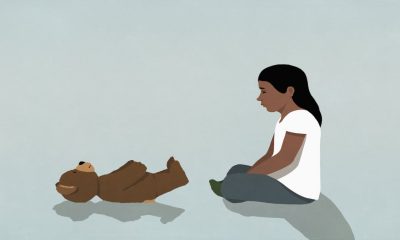Finance
Lessons from Rwanda 25 years after the world failed to stop a genocide


The United Nations deployment to Rwanda seemed like a straightforward peacekeeping mission back in 1993.
A lightly armed force of approximately 2,500 peacekeepers would help implement the Arusha Agreement, a 1993 peace accord that ended the civil war between Rwanda’s Hutu government and the Tutsi liberation movement, the Rwandan Patriotic Front.
Instead of overseeing national reconciliation, UN soldiers became eyewitnesses to genocide.
Disregarding the 1993 Arusha Accord, Hutu forces began to target Tutsis for extermination after a plane carrying Rwandan President Juvénal Habyarimana crashed on the evening of April 6, 1994. In the power vacuum created by his death, Rwanda’s Hutu political elite launched a long-planned campaign of genocide.
As the mass killings began, the UN ordered its blue helmeted troops to evacuate foreigners— but not intervene to save the Tutsis from slaughter. Between 800,000 and 1 million Tutsi and non-extremist Hutu civilians were murdered by their own neighbors.
A 1999 UN report assessing the the Rwanda deployment called the mission “disgraceful” for abandoning Tutsi refugees in schools and other supposed “safe zones” they had created.
“Troops were withdrawn when they were most needed,” said former UN chief Ban Ki-moon in 2014. “We should have done much more.”
Earlier this year, I interviewed former UN peacekeepers who served in Rwanda who had returned the country for the 25-year commemoration of the genocide. I learned that despite the broader mission’s many well-documented failings, peacekeepers took risks to save lives, going beyond official orders to protect innocent Rwandans.
-

 Business6 days ago
Business6 days agoGoogle lays off workers, Tesla cans its Supercharger team and UnitedHealthcare reveals security lapses
-

 Entertainment3 days ago
Entertainment3 days agoiPad Pro 2024 now has OLED: 5 reasons this is a big deal
-

 Entertainment7 days ago
Entertainment7 days agoLoneliness in kids: Screen time may play a role
-

 Business6 days ago
Business6 days agoThe Rabbit r1 shipped half-baked, but that’s kind of the point
-

 Entertainment5 days ago
Entertainment5 days agoWhy should we care what celebrities like Taylor Swift and Billie Eilish say about Palestine?
-

 Business4 days ago
Business4 days agoLegion’s founder aims to close the gap between what employers and workers need
-

 Entertainment4 days ago
Entertainment4 days ago‘Stardew Valley’ has an official cookbook. Here’s how to make Seafoam Pudding.
-

 Entertainment7 days ago
Entertainment7 days agoThe greatest workout playlist demands these soundtracks and scores





















